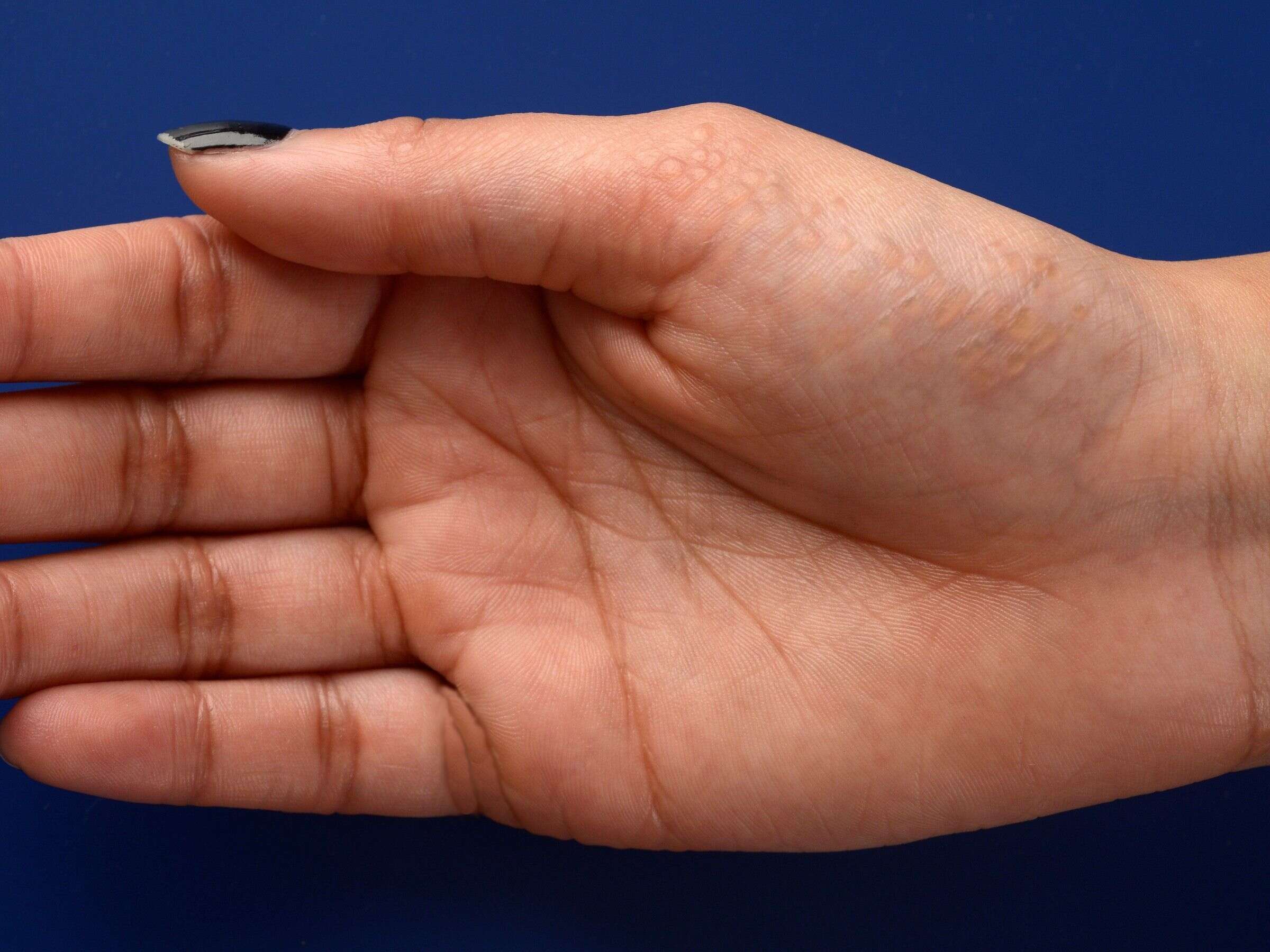
Porokeratosis Punctata Palmaris et Plantaris is a rare skin condition that affects the palms and soles. This disorder is characterized by small, punctate keratotic lesions that can be quite bothersome. But what exactly is Porokeratosis Punctata Palmaris et Plantaris? In simple terms, it's a type of porokeratosis, which is a group of skin conditions involving abnormal keratinization. These tiny, wart-like growths often appear in clusters and can cause discomfort, especially when walking or using your hands. Understanding this condition is crucial for managing symptoms and improving quality of life. Let's dive into 30 intriguing facts about this unique skin disorder to help you get a clearer picture.
Key Takeaways:
- PPPP is a rare skin condition that causes small, painful lesions on the palms and soles. It can be genetic and worsened by sun exposure, but treatments like creams and laser therapy can help manage symptoms.
- People with PPPP can improve their quality of life by wearing cushioned shoes, avoiding triggers like sun exposure, and joining support groups for emotional and practical support. Regular dermatologist check-ups and a balanced diet are also important for managing the condition.
What is Porokeratosis Punctata Palmaris Et Plantaris?
Porokeratosis Punctata Palmaris Et Plantaris (PPPP) is a rare skin condition. It primarily affects the palms of the hands and the soles of the feet. Understanding this condition can help those affected manage symptoms better.
-
Rare Condition: PPPP is an uncommon form of porokeratosis, a group of skin disorders characterized by abnormal keratinization.
-
Genetic Link: Often, PPPP has a genetic component, meaning it can run in families.
-
First Described: The condition was first described in medical literature in 1971.
-
Age of Onset: Symptoms typically appear in adulthood, usually between the ages of 30 and 50.
-
Gender Prevalence: Both men and women can develop PPPP, but it may be slightly more common in men.
Symptoms of PPPP
Recognizing the symptoms of PPPP is crucial for early diagnosis and treatment. Here are some common signs to look out for.
-
Small Lesions: Tiny, punctate keratotic lesions appear on the palms and soles.
-
Symmetrical Distribution: Lesions often appear symmetrically on both hands or both feet.
-
Painful Lesions: Some lesions can become painful, especially when pressure is applied.
-
Itching: Affected areas may itch, causing discomfort.
-
Thickened Skin: Over time, the skin in affected areas may become thickened and rough.
Causes and Risk Factors
Understanding what causes PPPP and the risk factors involved can help in managing the condition better.
-
Genetic Mutations: Mutations in specific genes are often responsible for PPPP.
-
Sun Exposure: Excessive sun exposure can exacerbate symptoms.
-
Immune System: A weakened immune system may increase the risk of developing PPPP.
-
Other Skin Conditions: Individuals with other forms of porokeratosis may be at higher risk.
-
Environmental Factors: Certain environmental factors, like exposure to chemicals, can trigger symptoms.
Diagnosis of PPPP
Accurate diagnosis is essential for effective treatment. Here’s how doctors typically diagnose PPPP.
-
Clinical Examination: A dermatologist will examine the skin lesions closely.
-
Biopsy: A skin biopsy may be performed to confirm the diagnosis.
-
Histopathology: Microscopic examination of the biopsy sample reveals characteristic features of PPPP.
-
Family History: Doctors may inquire about family history to identify genetic links.
-
Differential Diagnosis: Other skin conditions with similar symptoms must be ruled out.
Treatment Options
While there is no cure for PPPP, several treatment options can help manage symptoms and improve quality of life.
-
Topical Treatments: Creams containing salicylic acid or urea can help soften and remove keratotic lesions.
-
Cryotherapy: Freezing the lesions with liquid nitrogen can be effective.
-
Laser Therapy: Laser treatments can reduce the appearance of lesions.
-
Oral Medications: In some cases, oral retinoids may be prescribed.
-
Moisturizers: Regular use of moisturizers can keep the skin hydrated and reduce discomfort.
Living with PPPP
Managing PPPP involves more than just medical treatments. Lifestyle changes and self-care practices can make a significant difference.
-
Protective Footwear: Wearing comfortable, cushioned shoes can reduce pressure on the feet.
-
Avoiding Triggers: Identifying and avoiding environmental triggers can help manage symptoms.
-
Regular Check-ups: Regular visits to a dermatologist can help monitor the condition.
-
Healthy Diet: A balanced diet can support overall skin health.
-
Support Groups: Joining support groups can provide emotional support and practical advice.
Final Thoughts on Porokeratosis Punctata Palmaris Et Plantaris
Porokeratosis Punctata Palmaris Et Plantaris, a rare skin condition, affects the palms and soles with small, keratotic lesions. Understanding its symptoms, causes, and treatments can help manage this condition better. While genetic factors play a significant role, environmental triggers might also contribute. Treatments range from topical therapies to more advanced options like laser treatments. Consulting a dermatologist is crucial for proper diagnosis and management. Staying informed about the latest research and treatment options can make a big difference in living with this condition. Remember, early detection and consistent care are key. If you or someone you know shows symptoms, don't hesitate to seek medical advice. Knowledge and proactive care can significantly improve quality of life.
Frequently Asked Questions
Was this page helpful?
Our commitment to delivering trustworthy and engaging content is at the heart of what we do. Each fact on our site is contributed by real users like you, bringing a wealth of diverse insights and information. To ensure the highest standards of accuracy and reliability, our dedicated editors meticulously review each submission. This process guarantees that the facts we share are not only fascinating but also credible. Trust in our commitment to quality and authenticity as you explore and learn with us.
